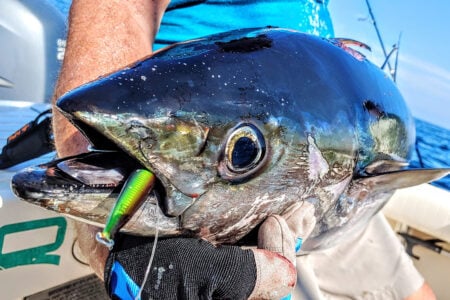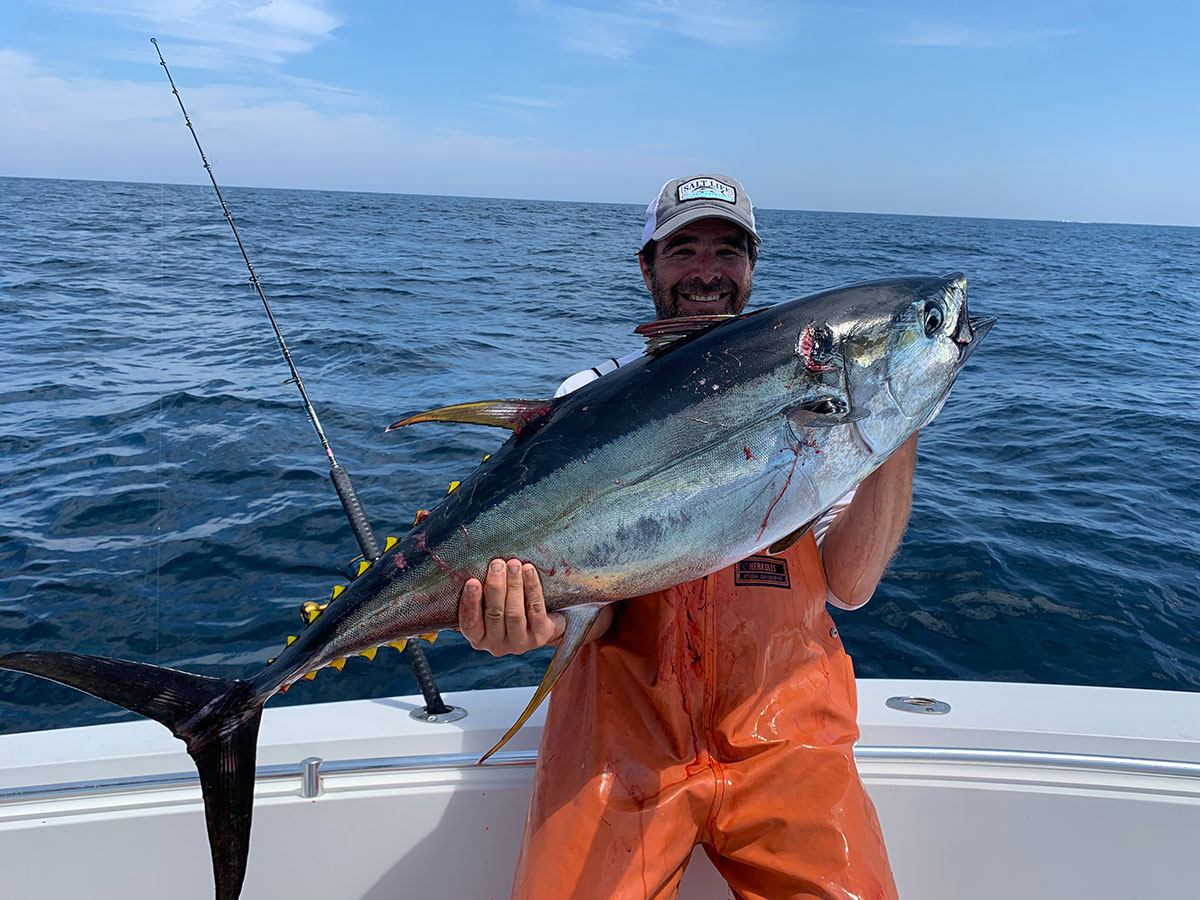
Put these 7 hot, midrange spots in your pocket for the season ahead!
Each year, tuna invade nearshore areas off the coast of New Jersey. Their appearance invigorates anglers fueled by daydreams of surface explosions and blistering runs.
Inshore and mid-shore boaters have to be prepared to fish a variety of locations, any of which can turn on with tuna. For captains in the lower half of the Garden State and into Delaware who are seeking fish closer to shore, this equates to learning and understanding the weather patterns and water temperature projections, that when combined with presence of bait, can equate to a solid tuna bite.
| BY THE NUMBERS |
| Massey’s Canyon N 38° 32.910’ / W 74° 44.160’ 28 Mile Wreck N 39° 00.395’ / W 74° 05.197’ The Cigar N 38° 54.270’ / W 74° 08.333’ Lemke’s Canyon N 39° 02.655’ / W° 73 41.579’ Sea Isle Ridge N 38° 59.314’ / W 74° 25.781’ Barnegat Ridge South N 39° 42.204’ / W 73° 47.951’ Barnegat Ridge North N 39° 42.180’ / W 73° 48.390’ Seaside Lump N 39° 55.585’ / W 73° 54.646’ |
But where might this take place? Without question, every year the hottest inshore spots can, and often do, change from the prior season.
Inshore waters can be considered seas from close to the coastline out to about 30 miles while mid-shore is often considered waters that are 30 to 55 miles off the hill. Clearly the smaller the vessel, the more valuable a close-to-home bite is. As a matter of fact, small boat tuna fishing continues to gain popularity throughout the region. In fact, last year I noted boats as small as 20 feet casting plugs for tuna on the inshore tuna grounds.
Furthermore, captains of larger vessels also enjoy the ease of pursuing serious pelagic fish without going all the way to the canyons. The trip is less rigorous on the body and the wallet, and can often provide more time with lines in the water and the possibility of being home for dinner!
If recent history repeats, the South Jersey spots listed here will likely see a tuna presence at multiple points in 2024, perhaps as early as May if conditions are right. Fingers crossed!
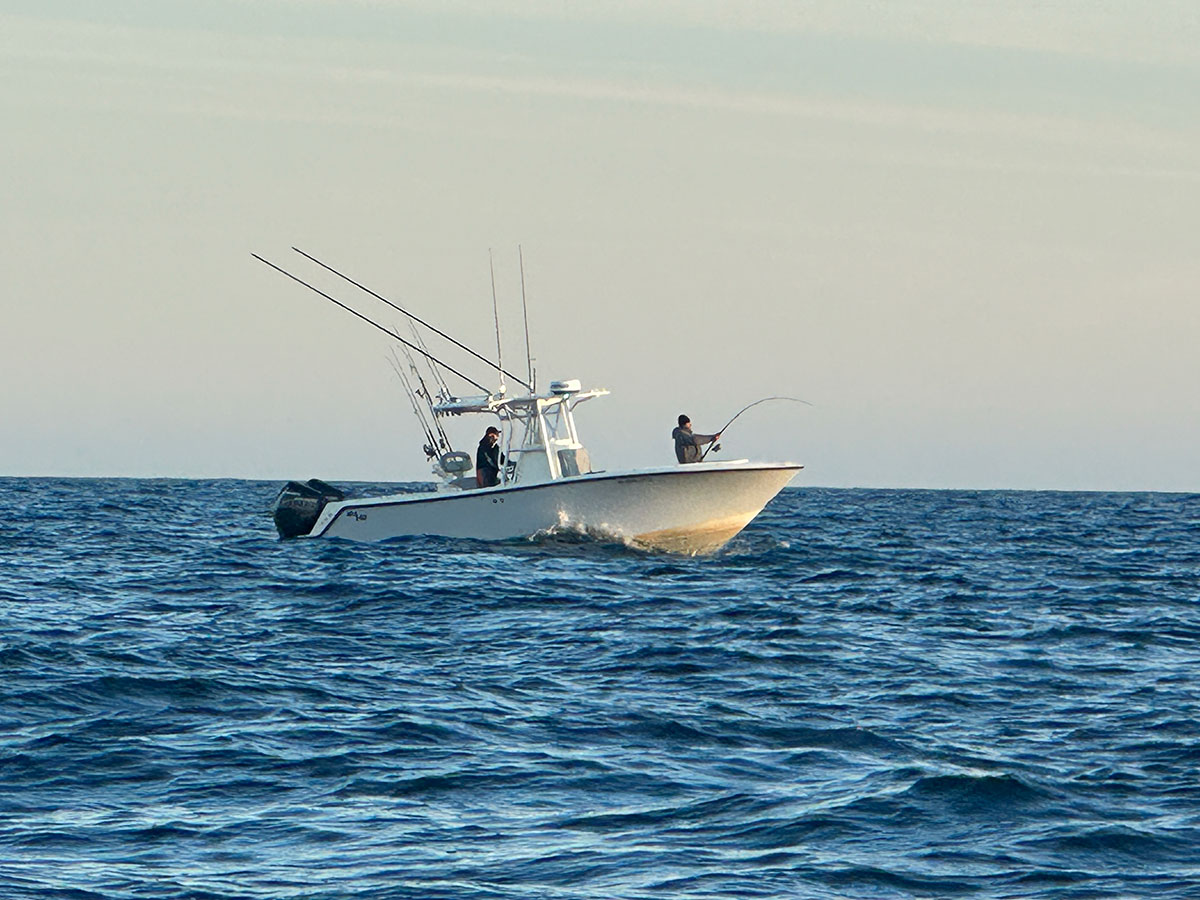
Masseys Canyon
This tuna location lies about 42 miles away from Cape May and not too much more from inlets slightly north. The waters that sink to 130 feet in spots rise to as high as 80 feet where the fish stack. The inclines that rise to elevated dimples within the area are the best places to fish when targeting Massey’s; in recent campaigns, yellowfin have been the hot ticket with fish showing up in mid-July and August with some hanging out into September if forage remains and waters stay hospitable. Chunking is the go-to operation at Massey’s and anglers that ladle butterfish will draw fish to the stern. Captains should not forget to bring live peanuts for the slick and the hook baits. Live spots floated on a balloon are another excellent addition to the spread. Crowds can form on the weekends meaning lots of boats and lots of bait, but at least all those chunks help keep the yellowfin in the area because they know with each sunrise it’s feeding time. Bluefin also make a showing at Massey’s in June and July, but one never knows if it’s going to be sustained action or a quick blip. Nonetheless some bluefin well over 100 pounds have been taken here in recent years.
28 Mile Wreck
Nicknamed the 28 Mile Wreck due to it residing 28 miles from Great Egg and Absecon Inlets, the Varanger sits in about 145 feet of water along the 29-fathom curve. The tanker is one of the most well-known fishing spots for boats fishing out of Atlantic and Cape May counties and is quite popular with the small boat fleet. School sized bluefin tuna that range from 10 to 50 pounds are most frequently targeted over and around the still largely-intact vessel. In good years, late June and July see shots of the bluefin that are ready and willing to take trolled tackle such as Sterling Tackle Wide Trackers and Chaos Bars. Then in the months of November and December, the bluefin sometimes return. They could be young school, school or large school as all have been caught there in the fall. Dense flocks of birds feeding on the small forage will show the way to the schoolers. Anglers do well to cast or troll very small, slender baits such as Ron-Z’s when they are on miniature food. Yellowfin sometimes make their way to the Varanger during late July and August, but the occurrence while not entirely surprising, is not something that can be depended upon.
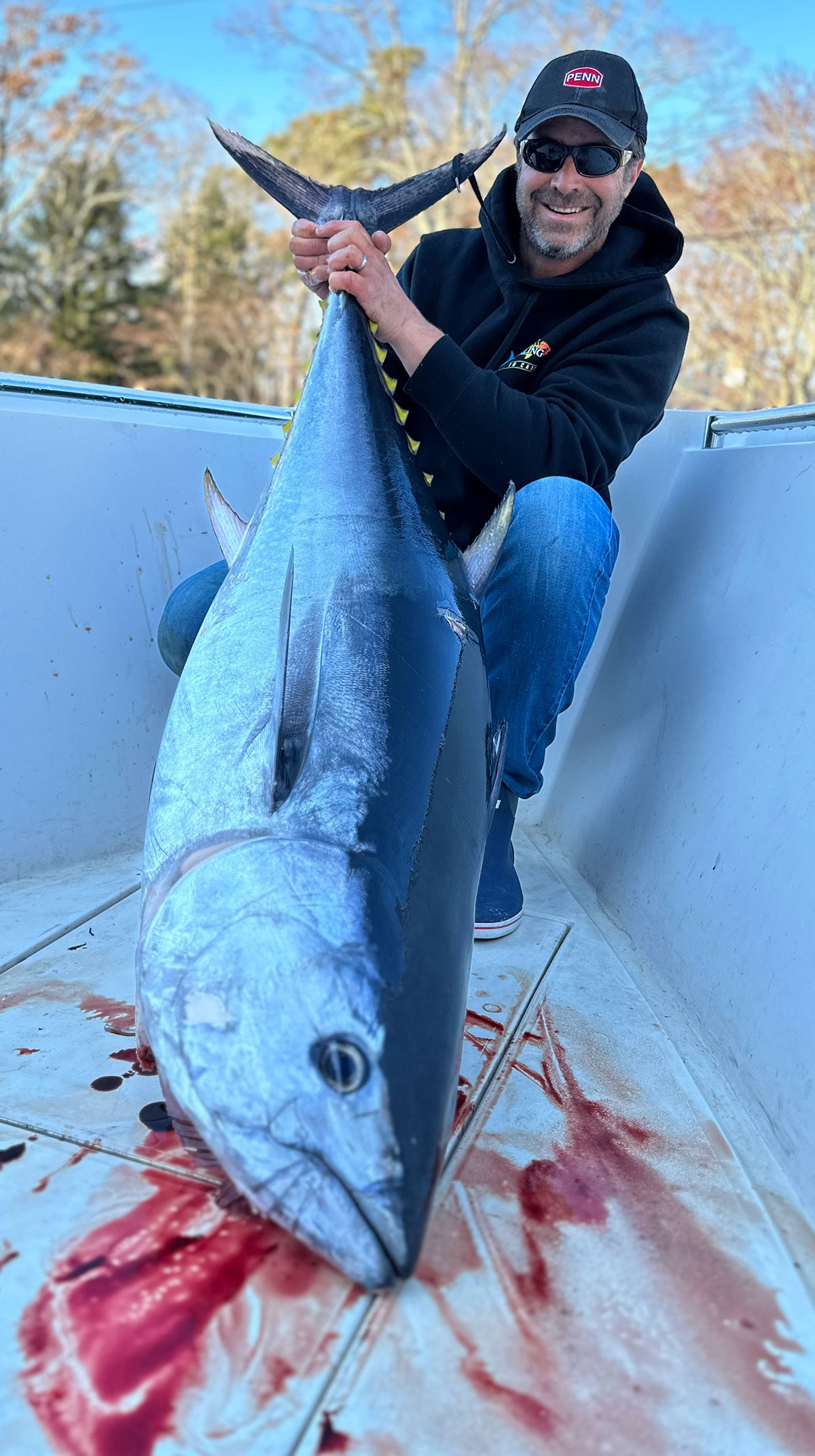
The Cigar
Located about 30 miles from the three southernmost Jersey inlets, the Cigar got its name from possessing a long, slender appearance. The depths shallow up to about 105 feet from 145 feet in surrounding waters. The fishing spot also holds some hard substrate on the bottom in very small patches. Bluefin tuna traverse this area making it a worthwhile stop for inshore anglers looking to score close to home. In addition, its location is only a few miles from the 28 Mile Wreck therefore making those two stops a good one-two punch for those seeking to fish multiple spots without as much travel. A few years ago, I ventured out in early December and found dense schools of small bluefin under birds at the Cigar. They had held in the area for days and when I finally had the opportunity to use the intel in which I was privy, like most small boaters, I was thrilled to give it a go. Upon arrival, the sounder was lit up with school-sized fish all feeding on tiny forage. There weren’t more than a dozen boats trolling, jigging and popping, and what’s more, very few fish were caught due to their being locked in on the micro baits. Anglers were actually hitting tuna in the back with plugs! The tuna, of note, only stayed on the high portion of the Cigar and not in the deeper waters flanking the uprising. When the fish are on bait this small, the best play is to throw the smallest of small Ron Z and Hogy offerings in hopes of matching the hatch.
Lemke’s Canyon
Located roughly 40 miles offshore of Atlantic City, this is a solid mid-shore try that is capable of holding bluefin or yellowfin. The spot is just far enough offshore that there are generally boats eclipsing 23 feet versus some of truly small vessels at the locations almost in sight of shore. In years past, football bluefin in the 10- to 50-pound range have staged over the spot when the water was colder in the early summer and again in the autumn. The action often comes on the troll with ballyhoo, spreader bars or cedar plugs. As summer progresses and the water warms, the potential for a decent to good yellowfin bite becomes more of a reality at Lemke’s. Warm water eddies shown by the satellite subscriptions display just the kind of temps to turn on a good chunk or troll bite. Anglers are best to zig and zag with their trolling spreads or set up on the chunk with butters, spearing and sardines. The location is popular with boats coming out of South Jersey inlets that want to fish north of the aforementioned locations when they are sluggish or when they want to target yellowfin over bluefin. Anglers should look for the presence of forage and then get their gear in the water.
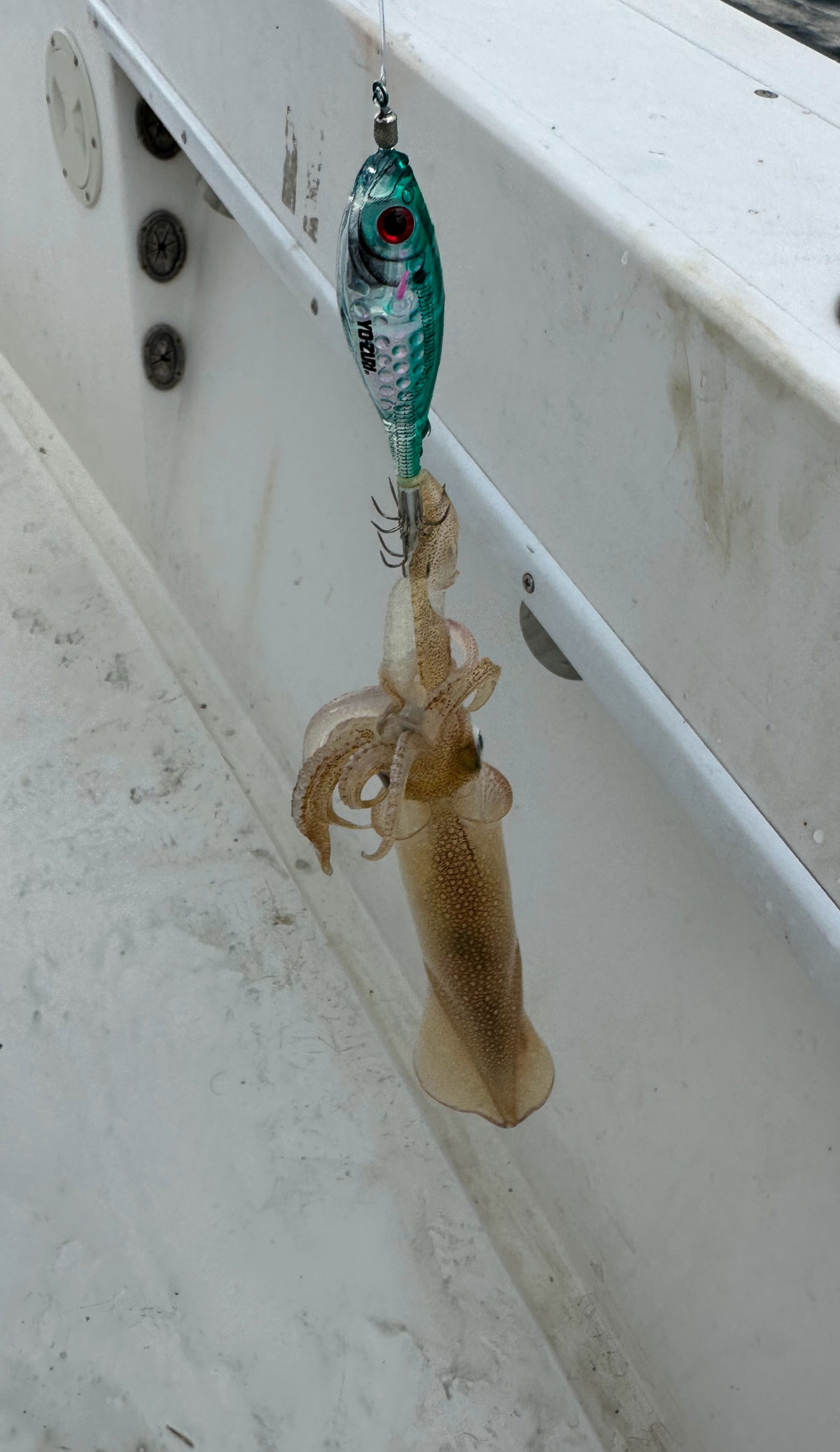
Sea Isle Ridge
The Sea Isle Ridge is about 15 miles from Townsends Inlet and about 22 miles from Atlantic City Inlet; in fact, on a perfectly clear day one can still make out the tallest casino in AC. The Sea Isle Ridge, like many other lumps and ridges, is the merely the bottom topography jutting toward the surface and creating an underwater peak with associated slopes. The 75 to 95 feet depths adjacent to the ridge spikes as high as 48 feet. I’ve caught Sea Isle bluefin off the side of the ridge, but generally anglers due best chunking or zig-zagging over waters 50 to 60 feet deep. Because the Sea Isle Ridge is close to the beach, it is susceptible to cold water upwelling created by south and southwest winds. When chilly, stirred water sets in and the tuna bite drops out. A couple days of light east or northeast winds usually gets temps back to the tunas’ liking. This is a place where trollers and chunkers meet and have to coexist. And both methods are effective! Purple and black Tracker Bars by Sterling Tackle are proven producers and ladled out bunker chunks get bites consistently when bluefin are present. Anglers shouldn’t forget the cedar plugs trolled in the wash as well. Sterling Tackle makes an innovative version of the old school lure called CedarFlex. The hook up rate far exceeds that of old school plugs and is well worth a try here. Late June and all of July are good times to get after school bluefin at the Ridge. Dawn is the rule of thumb for the summer bite here, and anglers playing the odds game, can fish from false light till late morning for the best action. Small boats, sport fishermen and center console battlewagons all can be found daily at the ridge.
Barnegat Ridge
This spot some 14 miles from Barnegat Light spot is a great destination during the summer months due to the lumps’ fish-holding qualities. Lumps that peak at about 55 feet with troughs extending from the contours draw bait and bluefin. When summer water temps level out after some easterly current, there’s a good chance a solid inshore tuna bite can take place. The fall of 2023 was fantastic campaign for inshore for bluefin in many places and the Barnegat Ridge was no different. The area saw a fall fish ranging from 50 to 65 inches with plenty of larger models in the mix. Ballyhoo trolled on Joe Shutes along with Ron Z plastics did well on both the north and south ridges. Boats occasionally trolled the several miles between each ridge in hopes of finding tuna away from the crowd, which at times they did. What’s more, there were tuna caught a few miles inshore of the ridge on days I was fishing the area. The casting crowd caught fish during the fall bite, but it was much more daunting a task than dragging a properly-presented bally behind the vessel. Still they had a blast tossing lures to fish boiling on the surface.
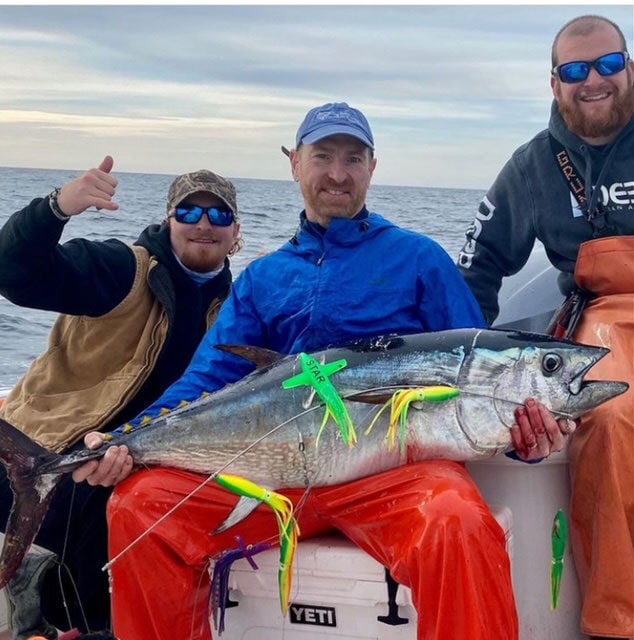
Seaside Lump
| LEGALIZE IT! |
| Inshore, offshore or midrange, if you’re chasing tuna species like yellowfin, bluefin, bigeye, longfin or swords and bills, remember to purchase the required Highly Migratory Species (HMS) permit for your boat ahead of time so it’s not forgotten. Go to hmspermits.noaa.gov and remember to keep your daily catch reports. |
Of course, the 2023 season saw this inshore spot light up with bluefin tuna for as much as seven weeks in what could be considered sustained bite. The fish averaged 55 to 70 inches with some that came in even bigger. Always known to put some tuna on the board, last year’s Lump saw the squid take residence and not leave town (until the commercial squid harvest opened on August 1). Even bad weather events didn’t move the bait and the squid remained thus the tuna stayed. Fishing live squid under balloons and covering each segment of the water column is the strategy for getting bit for this kind of fishing. One of the neat parts about the action that took place is that it came at all parts of the day. In fact, many captains did well in the late afternoon and evening bite. Because the Lumps are so close to shore and a quick jog from both Barnegat and Manasquan Inlets, many were able to take after-work shots at big bluefin tuna not too far from the beach. The best days were those that didn’t see a blustery sea breeze since the boat tends to pitch and everything is just a little more difficult in the breeze, especially for the small boaters that participated at the location. The water gets as shallow as 52 feet when fishing the Seaside Lump and I often drifted into waters 75 to 90 feet in hopes of getting a strike further from the dense fleet that jockeys on the Lump. The November and December bluefin also blew through this stretch in 2023 and were most often caught on ballyhoo trolled way, way back.
Of course, there are lots of inshore and mid-shore places to fish beyond those listed above. But one thing is likely, tuna will make stops at all of these places at different segments of the year. They could be small schoolies to large overs or anything in between. Captains that are ready to roll will surely capitalize.


